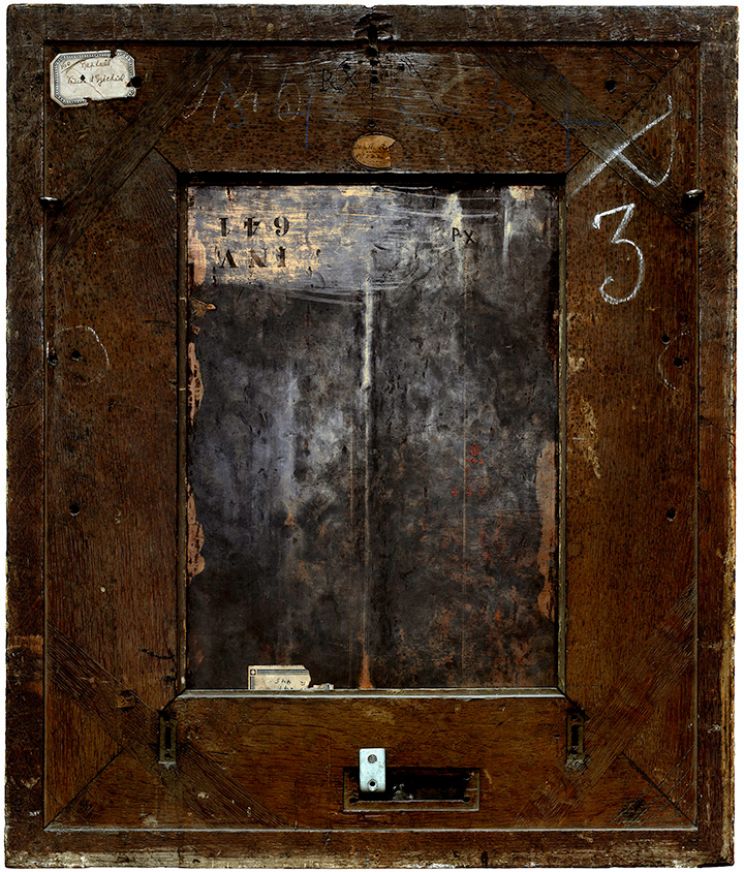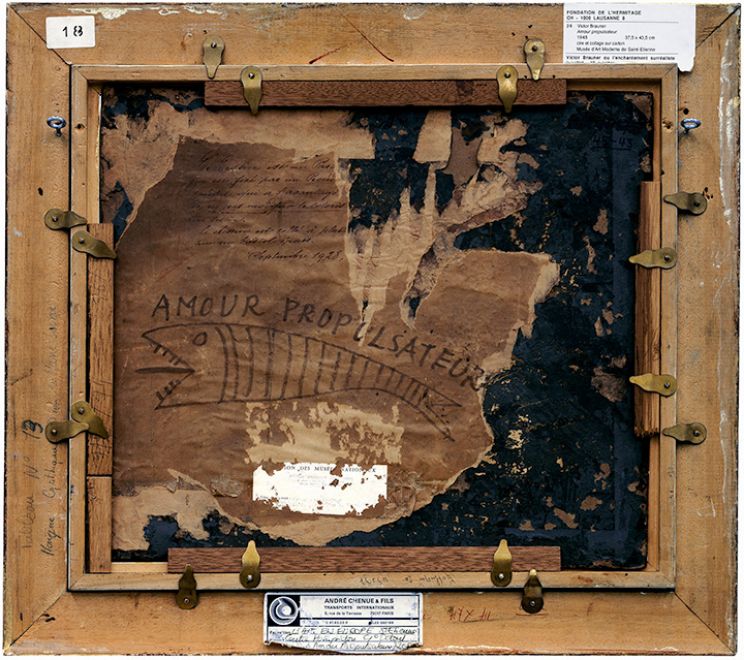Philippe GRONON
-

Verso n.23, Love, par Robert Indiana, collection particuliere en depot au Mamac, Nice

Verso n.60, Femmes a la toilette, par Pablo Picasso, collection Musee national Picasso-Paris

Verso n.13, Les amoureux en gris, par Marc Chagall, collection Centre Pompidou

Verso n.18, Tete de jeune fille par Pablo Picasso , Collection Centre Pompidou, Paris

Verso n.14, Printemps, par Francis Picabia, collection centre Pompidou, Paris

Les toits de Paris, par Fernand Leger collection Centre Pompidou

Verso n.17, Sans titre, par Bram van Velde, collection Centre Pompidou, Paris

Verso n.19, Panneau de Still Life 56, par Tom Wesselmann, collection Mamac, Nice

Verso n.20, Sans titre, par Raymond Hains, collection Mamac, Nice

Verso n.21, Relief-Carton rouge Medoc, par Bernar Venet collection Mamac, Nice

Verso n.22, Old Master - Seance galerie J. Niki de Saint Phalle collection Mamac, Nice

Verso n.24 Today - serie n.7, par On Kawara collection particuliere en depot au Mamac, Nice

Verso n.25, Stretcher Frame with cross bars III, par Roy Lichtenstein, collection particuliere, New York

Verso n.26, Fiat Panda Shopping, par Pascal Pinaud collection particuliere, Paris

Verso n.31, Etude pour la course de chevaux libres, par Theodore Gericault, collection du musee Magnin, Dijon

Verso n.33, Dessinateur dans les ruines d'un temple a Paestrum, par Robert Hubert, collection du musee des Beaux-arts d'Amiens

Verso n.34, La Vision d'Ezechiel, par Raphael, collection du musee du Louvre

Verso n.35, Portrait de Michel Ange, par Bugiardini Giuliano, collection du musee du Louvre

Verso n.37, Portrait d'homme, par Titien, collection du musee du Louvre

Verso n.38, Nympheas, par Claude Monet, collection du musee d'art moderne de Saint Etienne

Verso n.40, Amour propulsateur, par Victor Brauner, collection du musee d'art moderne de Saint Etienne

Verso n.43, Le nue Jaune par Sonia Delaunay, collection du Musee des beaux-arts de Nantes

Verso n.46, Le Christ enfant en Salvador Mundi, par Biagio di Antonio Tucci, collection du musee Magnin de Dijon

Verso n.50, L'origine du monde, par Gustave Courbet, collection du musee du d'Orsay, Paris

Verso n.53, Baigneuse debout, par Pablo Picasso, collection musee national Picasso, Paris

Verso n.52, Baigneuse debout, par Pablo Picasso, collection Musee national Picasso, Paris

Verso n.55, Visage aux deux profils, par Pablo Picasso, collection musee national Picasso, Paris

Verso n.57, Composition, par Pablo Picasso, collection Musee national Picasso, Paris

Verso n.61, Verre et pipe, par Pablo Picasso, collection Musee national Picasso, Paris

Summary
Since the late 1980s, French photographer Philippe Gronon has been developing a body of work with a view camera. From shutter release to print, he has combined the specific resources of gelatin silver and digital processes in accordance with the planned result. His subjects have been those that have a function of physical or mental transition, of exchange, passage, or communication (elevator doors, X-ray plates, blackboards, lithographic stones, etc.). Working in black and white, each object was photographed frontally, filling the whole image, eliminating any context, anecdote, or picturesqueness.
Versos, begun in 2005, therefore constitutes a logical sequel to the series that preceded it. Working for the first time in color, Gronon has photographed the backside of paintings by modern masters, presenting each work at actual size. At the same time, however, they effect a kind of reversal of perspective. By choosing paintings (based purely on the aesthetic of the verso side), Gronon has taken an object whose value lies, precisely, in its façade, and yet, here what he shows is not the front, as with his other objects, but the back. Because these are paintings, color is de rigeur, as is the way he surrounds the image with white, as in traditional photography. Suddenly, instead of showing us the obverse, he takes us behind the scenes, approaching the masterpiece via the scullery, the wings, the nuts, the bolts. This becomes more risky when the identity of the recto becomes known and is accompanied by more and more noteworthy information (signatures, markings, museum labels, etc.). The documentary interest also grows and threatens to overwhelm. The greater this interest, the longer it takes us to really look at the photographic work. This predominance of the anecdotal is necessarily heightened by the fame and popularity of the referent.
But never in his work does Gronon strain for effects, or seek to provoke emotion. He strives to grasp the object, which is meticulously chosen and meticulously framed, with the greatest legibility or—in photographic terms—with the best possible definition. There is, for this, no privileged moment, as there is in the photography of events. The meaning of what the photograph conveys is never either betrayed or hidden. But it is, although fixed in its literal obviousness, disconnected from its context and from the function that is its raison d'être.
Philippe Gronon has exhibited widely in Europe including solo shows at the Bibliothèque Nationale de France (1997), Centre Régional d'art Contemporain, Montbéliard, France (2001 and 2013), Mamco Geneva (2003 and 2010), Villa Medici, Rome (2010), Musée des beaux-arts, Nantes (2010), Musée des Beaux arts de Dijon & Musée Magnin Dijon (2012), Musée Picasso, Paris (2016), and in group exhibitions, including La Force de l'Art and Grand Palais (2006), Centre Pompidou (2006 and 2007), Foundation Prada (2014), and currently at the Musée de Grenoble.
Press
Philippe GRONON
The Art of the Verso: Coming at You from the Rear
2019-06-15
Philippe GRONON
Press Release: Versos
2019-05-16




























